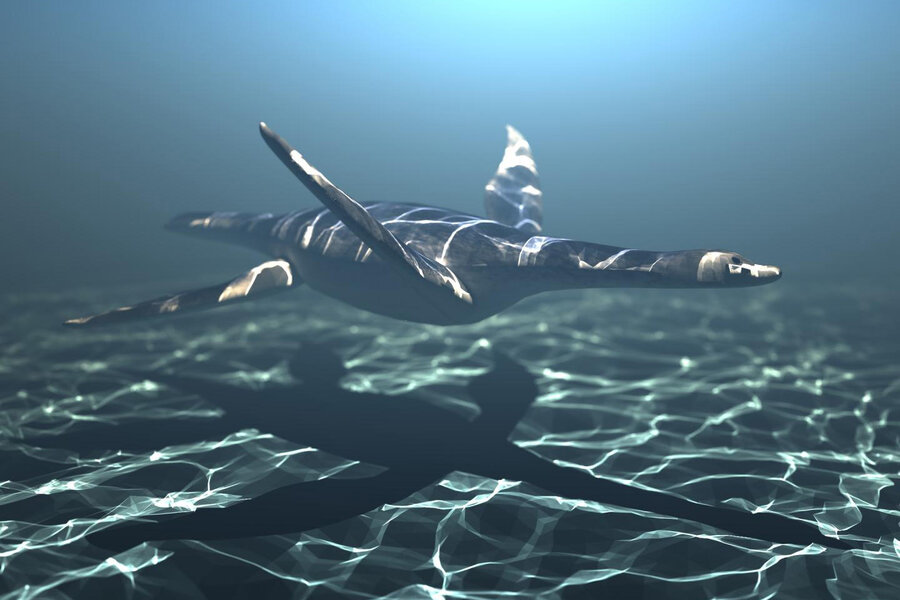This 'weird and unique' reptile swam like a penguin during the dinosaur age
Loading...
A nearly 200-year-old debate on how a marine reptile from the age of the dinosaurs swam may finally be put to rest.
By using computer simulations, scientists have determined that the unusual, four-flipper plesiosaurs swam through the ocean by flapping their two front flippers in an underwater flight motion, similar to the way penguins swim.
What was surprising, said researchers in a study published this week in PLOS Computational Biology, was that the creatures didn’t seem to use their back flippers to affect speed, but instead for steering and stability.
"Plesiosaurs are truly weird and unique creatures," paleontologist Adam Smith of Britain's Nottingham Natural History Museum told Reuters.
The plesiosaurs – which resembled Scotland's mythical Loch Ness monster, with its four large flippers and long necks – was unlike any modern-day swimming animal. For this reason, there have been competing hypotheses about their swimming style, with some researchers suggesting plesiosaurs moved their limbs mostly backwards and forwards, in a rowing motion.
"The plesiosaurs were a highly successful group of large predatory creatures, yet we didn't know how they swam,” Greg Turk, professor of computer science at Georgia Institute of Technology, told Reuters.
By designing computer simulations based on the anatomy of a species of plesiosaur that lived 180 million years ago, called meyerasaurus, scientists were able to identify the best swimming strategy for their body shape. They showed that the ancient swimmers were unlike most others, including most fish and whales, which tend to generate thrust using their tails, reports Reuters
"What was unexpected was that no matter what motion we simulated for the back flippers, they could not substantially contribute to the plesiosaur's forward motion," said Professor Turk.
First discovered in 1823, the Plesiosaurs are thought to have lived from about 200 million to 66 million years ago, disappearing in the same mass extinction that wiped out the dinosaurs.
They ate fish and squid and came in various shapes and sizes. Some had short necks, while others had long ones, including the elasmosaurus, a creature that measured about 46 feet long. Meyerasaurus, discovered in Germany, measured 10 feet long.
Researchers say that their computer simulations could be used to better understand the mechanics of plesiosaurs’ swimming techniques and perhaps those of other prehistoric animals.
This report contains material from Reuters.





